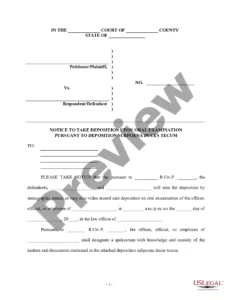A record retention policy refers to the set of rules that dictates the length of time an organization will retain different types of records. The policy may also mandate the destruction of these records based on a predefined schedule. In Canada, there are laws and regulations that govern the creation and preservation of records by businesses. These guidelines vary from one jurisdiction to another, and they apply not only to physical but also electronic records.
As such, companies are legally required to implement a formal record retention policy to ensure that they are in compliance with these laws and regulations. This will also help protect the company from any legal liabilities that may arise due to mishandled or improperly stored records. A record retention policy template can serve as a helpful framework to get organizations started on creating their own policy.
Important Considerations for a Record Retention Policy in Canada
There are various aspects that organizations in Canada need to consider when developing their record retention policy. These include:
- Applicable Laws and Regulations: Organizations must ensure that their record retention policy is in compliance with all relevant federal and provincial laws and regulations.
- Business Needs: The policy should address the specific records and documents that are necessary for the organization to meet its business objectives and obligations.
- Record Formats: The policy should cover both physical and electronic records, as organizations are increasingly relying on digital information storage and management systems.
- Record Classification: The policy should establish a system for classifying records based on their importance, sensitivity, and legal requirements.
- Record Retention Periods: The policy should specify the retention periods for various types of records, taking into account legal requirements, business needs, and the potential for future litigation.
- Record Destruction and Disposal: Clear guidelines should be provided regarding the secure and confidential destruction or disposal of records that have reached the end of their retention period.
Essential Elements of a Record Retention Policy
When creating a record retention policy, there are several key elements that organizations should include:
- Policy Statement: This section should provide a clear and concise statement of the organization’s commitment to record retention and its compliance with relevant laws and regulations.
- Scope of the Policy: Clearly define the types of records and documents covered by the policy, including both physical and electronic records.
- Retention Periods: Specify the retention periods for different categories of records, considering legal requirements, business needs, and potential litigation risks.
- Record Classification: Establish a system for classifying records based on their importance, sensitivity, and legal requirements. This will help organizations prioritize the protection and retention of critical records.
- Record Destruction and Disposal: Provide detailed guidelines for the secure and confidential destruction or disposal of records that have reached the end of their retention period.
- Responsibilities: Assign specific roles and responsibilities for the implementation, maintenance, and enforcement of the record retention policy within the organization.
- Implementation and Monitoring: Outline the steps and processes for implementing the policy, as well as the mechanisms for monitoring compliance and addressing any deviations.
Conclusion
A well-crafted record retention policy is essential for organizations in Canada to comply with legal requirements, manage risks, and protect sensitive information. A record retention policy template can provide a starting point for organizations to develop their own policy, ensuring that it is tailored to their specific needs and requirements. By implementing a comprehensive record retention policy, organizations can enhance their operational efficiency, mitigate legal risks, and safeguard valuable information.
Regular reviews and updates of the policy are crucial to ensure that it remains aligned with evolving laws, regulations, and business practices. Effective record retention practices enable organizations to demonstrate accountability, protect their reputation, and maintain a high standard of corporate governance.
FAQs
What is the primary purpose of a record retention policy in Canada?
The primary purpose of a record retention policy in Canada is to ensure that businesses comply with relevant laws and regulations governing the creation, retention, and disposal of records. It also helps organizations manage risks, protect sensitive information, and demonstrate accountability.
What are some key elements that organizations should include in their record retention policy?
Key elements of a record retention policy include a policy statement, scope of the policy, retention periods for different categories of records, record classification, guidelines for record destruction and disposal, assignment of responsibilities, and procedures for implementation and monitoring compliance.
How can organizations ensure that their record retention policy is effective and compliant?
Organizations can ensure the effectiveness and compliance of their record retention policy by conducting regular reviews and updates to reflect changes in laws, regulations, and business practices. Additionally, they should implement appropriate record management systems and provide training to employees on their roles and responsibilities under the policy.
